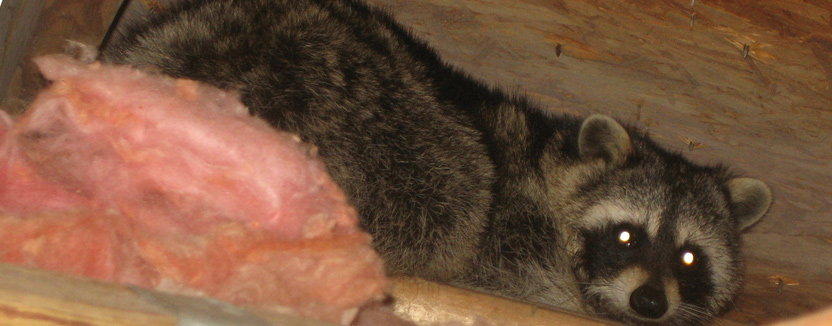NEED LOCAL HELP? We have
wildlife removal professionals servicing 95% of the USA. Click
here to hire a
local raccoon removal expert in your home town. Updated
2018. But read the below advice first!
You’ve probably already made the educated guess that no,
repellents will not get raccoons out of your attic. And as an
experienced wildlife removal professional, I can confirm. Of
course, there have been cases where different deterrents have
worked in making raccoons leave an attic, but these are more
like exceptions to the rule rather than bulletproof raccoon
removal tactics. Raccoon eviction fluid is one repellent that
has been successful in aiding people to get rid of female
raccoons that have made a natal den in the attic, and I will
talk more about it below.

Odor repellents. In theory, strong harassing odors will urge a
raccoon to find a safer place to nurse its young, and this can
be accomplished by using different powders and sprays that are
available in stores and online. Almost all of these so-called
raccoon deterrents are made with naphthalene – in layman’s
terms, mothballs. Either you go about it with deterrent products
available on the marketplace or directly with mothballs, bleach,
ammonia or other sorts of popular remedies that you’ve heard
might work, the chances of success are close to none. Yes,
there’s always the chance that a raccoon will prefer to find
another non-smelly spot and leave your mothball bomb of an
attic, but if the raccoon already has babies, it will certainly
prefer to endure the nasty smell instead of putting its young in
danger by moving them. In addition, attics are usually pretty
decent in size and well-ventilated. This means bad odors will
easily disperse, not causing such a big issue with raccoons as
we might think.
Sound repellents. There are two solutions that come with sound
repellents. One might work while the other definitely does not
work. A radio in the attic might make the raccoon feel unsafe,
and determine it to leave in search of a safer place. If you
want to try this, make sure the volume on your radio is high,
and leave it on for three or four days to see if it does the
job. While there’s a slight chance that the radio trick might be
effective, this is not the case with ultrasonic high-pitch sound
emitting machines. These devices are totally ineffective, no
matter what the ad says.
Visual repellents. You may have heard that you can get rid of
raccoons from your attic by putting some bright lights or
stroboscopic lights up there. It won’t work. If the raccoon
wants to set camp in your attic, a visual deterrent won’t be the
thing that changes its mind. In the odd case it does bother it
enough, it will simply find the least exposed spot and resume
its activity.
Raccoon eviction fluid. Available either in paste or liquid
form, raccoon eviction fluid contains male raccoon urine and
male raccoon gland secretions. It’s highly usual for different
species of mammals to have males kill babies that aren’t theirs
so that they can mate with the female, thus assuring the
survival of their own genes. Male raccoons will also sometimes
do this. This is why raccoon eviction fluid is the only raccoon
repellent that might work. A female raccoon might choose to move
her litter because it senses the danger of a nearby male. Now,
it might work or it might not work, but it’s definitely a safer
bet than all the other deterrents and home remedies. If the
mother has a safe alternative, she could choose to move her
young, but there’s a big chance that she will take the risk of a
male maybe getting to her young rather than taking the risk of
she herself harming her young by moving them.
The best way to get raccoons out of your attic is by removing
them with the help of raccoon traps. For more information on how
to do this yourself or how to find professionals who can do the
job for you, feel free to further browse through this website.
Go back to the Raccoons in the attic
home page.